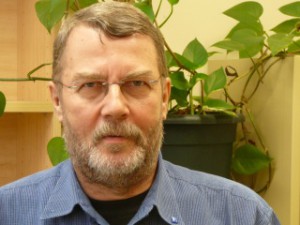Interview with plant geneticist Hans-Jörg Jacobsen
 While people are dying of malnutrition in Africa and Asia, in Germany inordinate amounts of food are thrown away every day. Until now feeding the world population has more or less been an issue of distribution. According to Professor Hans-Jörg Jacobsen from the Institute for Plant Genetics at the Leibniz Universität Hannover, this will undergo a radical change in the future. Food shortages will affect everyone. With this in mind, the scientist warns against the unfounded wariness toward green genetic engineering.
While people are dying of malnutrition in Africa and Asia, in Germany inordinate amounts of food are thrown away every day. Until now feeding the world population has more or less been an issue of distribution. According to Professor Hans-Jörg Jacobsen from the Institute for Plant Genetics at the Leibniz Universität Hannover, this will undergo a radical change in the future. Food shortages will affect everyone. With this in mind, the scientist warns against the unfounded wariness toward green genetic engineering.
The German population is shrinking. Why should Germany be worried about food shortages?
Hans-Jörg Jacobson: Our demand for plant products is actually on the rise – we need them not only for food but for other things as well. Corn, for example – which is subsidised – is grown increasingly for use in biogas plants. Everyone wants to see sustainable energy prevail. I can take fifty kilos of wheat and either feed a person for six weeks or use it to provide enough bio-fuel for a car to drive from Hamburg to Hanover, a distance of just under 150 km. There are already signs of food shortage. In 2012, for the first time in 25 years, Germany will import more grain than it exports. Food prices worldwide are on the rise.
Can’t we just produce more food?
It’s not that simple, unfortunately. The world has about 1.5 billion hectares of farmland, and that’s about the limit. Each additional acre of land that is ploughed for cultivation means more carbon dioxide emissions, which ultimately heat the atmosphere. Why is this? The increased oxygen in the soil activates the microorganisms, which then break down organic substances and cause emissions. What we need is to intensify the way we work the land already under cultivation in a manner that is sustainable.
So it is a matter of using land more effectively, not increasing acreage?
Exactly. Better management will drive increases in yield – currently at a maximum per annum rate of 1 percent. That’s why we need to find new solutions. We need plants that are more resistant to disease and which need fewer pesticides and less water and fertilizer.
Is it possible to breed these kinds of plants?
There are two disadvantages to plant breeding. First of all, it takes a very long before the desired traits are isolated and introduced into new strains. And secondly, only those traits can be used that are already present in a gene pool. In the face of climate change, however, we need traits that are entirely new. Bangladesh, for instance, needs corn plants that can withstand not only longer dry periods but flooding as well. Green genetic engineering is the only quick way to tackle such challenges.
The wariness toward genetically modified plants is considerable.
Yes, but it is unfounded, from both a scientific and engineering standpoint. The EU has invested 300 million euros in 500 projects to investigate the risks of green genetic engineering. Results have showed that the risks affiliated with green genetic engineering are no more and no less than those of conventional breeding. As long as the public is barraged by yellow press headlines that read “Genetically Engineered Potatoes Cause Brain to Shrink”, results like these fall on deaf ears.
What do you think about the issues raised by the environmentalist?
Not much. The anti-genetic engineering scene propagates the idea of an idyllic, idealised world that should stay just the way it is, with the small-time farmer attending his plot of land. With or without humans, our environment is always changing. The genetic make-up of plants, for example, is by nature unstable. Genes are constantly changing through natural mutation. None of our crop plants can survive in the wild because most of the time, the natural resistance mechanisms have been bred out of them. Green gene engineering can help when conventional methods are stymied. Given the problems we face today – whether it’s population growth, climate change, energy supply or the global shift in food consumption – we simply cannot afford to dismiss any of the approaches we have at our disposal.





